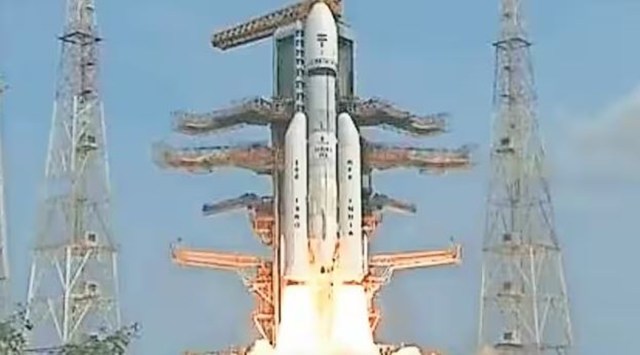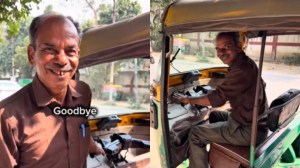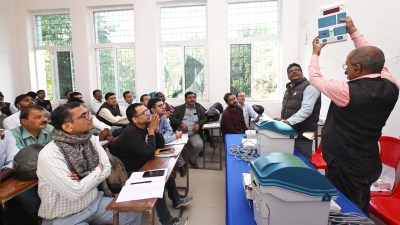Anonna Dutt is a Principal Correspondent who writes primarily on health at the Indian Express. She reports on myriad topics ranging from the growing burden of non-communicable diseases such as diabetes and hypertension to the problems with pervasive infectious conditions. She reported on the government’s management of the Covid-19 pandemic and closely followed the vaccination programme. Her stories have resulted in the city government investing in high-end tests for the poor and acknowledging errors in their official reports. Dutt also takes a keen interest in the country’s space programme and has written on key missions like Chandrayaan 2 and 3, Aditya L1, and Gaganyaan. She was among the first batch of eleven media fellows with RBM Partnership to End Malaria. She was also selected to participate in the short-term programme on early childhood reporting at Columbia University’s Dart Centre. Dutt has a Bachelor’s Degree from the Symbiosis Institute of Media and Communication, Pune and a PG Diploma from the Asian College of Journalism, Chennai. She started her reporting career with the Hindustan Times. When not at work, she tries to appease the Duolingo owl with her French skills and sometimes takes to the dance floor. ... Read More
Test vehicle mission ahead of India’s first manned spaceflight by Sept: Parliament told
First test vehicle mission will check the processes for aborting the mission mid-air, the parachute system that will bring the crew module down to sea, and the recovery of the crew members from the module after splashdown
 The test vehicle is a single stage liquid propellant rocket meant to test all the systems of Gaganyaan at sub-orbital level before a complete uncrewed mission that will mimic the complete final human mission. (Representational Photo)
The test vehicle is a single stage liquid propellant rocket meant to test all the systems of Gaganyaan at sub-orbital level before a complete uncrewed mission that will mimic the complete final human mission. (Representational Photo) Even with a busy schedule ahead of the landing of Chandrayaan-3 planned for August 23, scientists of the Indian Space Research Organisation (ISRO) have been working on the country’s human spaceflight mission. The first test vehicle mission – meant to test the crew escape system – has been planned for August or September, according to a reply by Minister of State for Science and technology Jitendra Singh in Parliament.
The test vehicle is a single stage liquid propellant rocket meant to test all the systems of Gaganyaan at sub-orbital level before a complete uncrewed mission that will mimic the complete final human mission.
The first test vehicle mission (TV-D1) will check the processes for aborting the mission mid-air, the parachute system that will bring the crew module down to sea, and the recovery of the crew members from the module after splashdown.
“All subsystems pertaining to the Test Vehicle (TV-D1) mission have been realised. Crew module integration is completed,” the minister said in his reply. The space agency has already tested the propulsion system of the crew escape system and the crew module on ground.
Helicopter-based air drop tests of the crew escape system have also been completed, according to officials from the space agency. “A helicopter – or any aeroplane for that matter – cannot go to an altitude of say 10km from the surface of the earth. The test vehicle missions will test all systems and processes at a much greater height,” said the official.
A second crew module for the first uncrewed mission has also been completed and delivered to the space agency by the industry, the reply said. The minister had previously said that there will be two test vehicle missions before the first uncrewed mission and another two before the second uncrewed mission. The mission carrying humans will take place only after that.
The minister said the astronauts are nearing completion of their training.
Four selected air force pilots have already undergone generic training in Russia and were receiving mission specific training in India. The Indian Institute of Technology-Madras has been roped in to develop a training module for them using augmented reality, virtual reality, and mixed reality.
In addition, the space agency has also completed the construction of the orbital module preparation facility. Orbital module consists of the integrated crew module and service module. The crew module will be the habitable part of the Gaganyaan spacecraft that will have pressurisation and life support systems for the crew members, whereas the service module will be an unpressurised structure that will contain the propulsion system, power systems, and avionics to support the crew module during the mission.
Launch pad augmentation works for Gaganyaan are also underway. The launch pad too has to be human rated. At present, no one is present on the launch pad at the time of launch; the mission is controlled from a complex nearly 5km away.
Training of the space agency and the Indian Navy for recovery of the crew once they splashdown in the sea is also underway, the minister said in his reply. “The delivery of human centric products for crew training commenced from various national labs. Testing of human centric products is underway,” the reply said.








